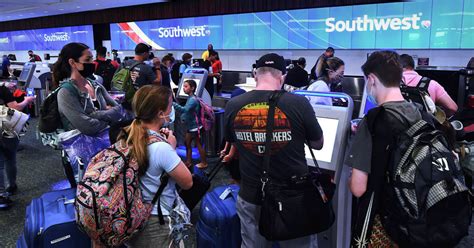
A passenger’s initial delight at receiving a complimentary upgrade on a recent flight quickly turned to dismay upon discovering the unsettling reason behind the unexpected gesture: numerous empty seats due to a significantly underbooked flight. The traveler, documenting his experience on TikTok, highlighted the stark contrast between the perceived luxury of an upgrade and the underlying reality of low demand, sparking a conversation about the airline industry’s challenges and the often-unseen factors influencing passenger experiences.
The TikTok user, @jakexplanes, shared his experience, showcasing his initial excitement at being moved to a premium seat. However, this joy was short-lived as he panned the camera to reveal row after row of unoccupied seats. “When you get a free upgrade but realize the plane is empty,” he captioned the video, which has since garnered significant attention and commentary on social media. The video underscored an inconvenient truth about the airline industry: upgrades aren’t always a perk of loyalty or status, but sometimes a consequence of operational necessities.
The incident raises questions about the factors influencing flight occupancy rates, airline pricing strategies, and the overall passenger experience. While upgrades are generally seen as a positive gesture, this particular situation highlighted the less glamorous reasons behind such offers.
Airlines often strategically manage seat allocation to maximize revenue. Overbooking, for instance, is a common practice where more tickets are sold than available seats, anticipating that some passengers will not show up. Conversely, underbooked flights represent a missed opportunity for airlines, leading to reduced profitability and potential adjustments in future route planning.
The pandemic significantly impacted the airline industry, with travel restrictions and health concerns leading to a sharp decline in passenger numbers. Although travel has rebounded, airlines continue to navigate fluctuating demand, economic uncertainties, and evolving consumer behavior. The situation described by @jakexplanes may reflect ongoing challenges in accurately forecasting passenger demand and optimizing flight capacity.
The experience also touches upon the psychology of travel and consumer perception. While an upgrade typically enhances the travel experience, the context in this case dampened the positive impact. The realization that the upgrade stemmed from low occupancy rather than a reward for loyalty altered the perceived value of the gesture.
The video ignited a discussion among viewers, with many sharing their own experiences and perspectives on airline upgrades. Some expressed empathy for the traveler’s disappointment, while others offered insights into the operational realities of the airline industry. This incident serves as a reminder that the airline industry is a complex and dynamic ecosystem, with factors beyond passenger control influencing the overall travel experience.
In-Depth Analysis of Factors Contributing to Underbooked Flights
Several factors can contribute to a flight being significantly underbooked, leading to the availability of free upgrades for passengers. These factors often intertwine, creating a complex interplay that airlines must constantly monitor and adjust to.
1. Seasonality and Demand Fluctuations: The airline industry experiences significant seasonal variations in demand. Flights to leisure destinations are typically more popular during holidays and school breaks, while business travel tends to peak during weekdays and decline during weekends. Flights during off-peak seasons or unpopular travel times are more likely to be underbooked. Airlines use historical data and predictive analytics to anticipate these fluctuations and adjust flight schedules and pricing accordingly. However, unforeseen events like economic downturns or disease outbreaks can disrupt these patterns and lead to unexpected underbooking.
2. Economic Conditions: Economic conditions play a crucial role in determining travel demand. During periods of economic recession or uncertainty, individuals and businesses tend to cut back on discretionary spending, including travel. This can lead to a decrease in flight bookings and an increase in the number of empty seats. Conversely, during periods of economic growth, travel demand tends to increase, leading to higher occupancy rates and potentially higher fares. Airlines closely monitor economic indicators such as GDP growth, unemployment rates, and consumer confidence to gauge the overall health of the travel market.
3. Route Performance and Competition: The performance of a particular flight route can also influence occupancy rates. If a route is not profitable or if it faces intense competition from other airlines, it may experience lower demand and higher vacancy rates. Airlines constantly evaluate the performance of their routes and may adjust flight schedules, pricing, or even discontinue routes that are consistently underperforming. The presence of low-cost carriers on a route can also put downward pressure on fares and reduce the profitability of traditional airlines, potentially leading to underbooking if the airline is unable to compete effectively on price.
4. Pricing Strategies: Airline pricing strategies play a critical role in managing demand and maximizing revenue. Airlines use sophisticated yield management systems to adjust fares based on real-time demand, historical data, and competitive pricing. If a flight is underbooked, airlines may lower fares in an attempt to fill empty seats. However, lowering fares too much can erode profitability and may not always be effective in attracting enough passengers. Airlines must strike a delicate balance between maximizing occupancy and maintaining profitability.
5. Unforeseen Events and Disruptions: Unforeseen events such as natural disasters, political instability, or disease outbreaks can significantly disrupt travel patterns and lead to widespread flight cancellations and underbooking. The COVID-19 pandemic, for example, had a devastating impact on the airline industry, leading to a drastic decline in passenger numbers and unprecedented levels of underbooking. Airlines must be prepared to respond quickly and effectively to these types of events by adjusting flight schedules, offering refunds or rebooking options, and communicating with passengers in a timely manner.
6. Aircraft Size and Configuration: The size and configuration of the aircraft used on a particular route can also influence occupancy rates. If an airline uses a larger aircraft on a route with relatively low demand, it may struggle to fill all the seats. Similarly, if an aircraft has a disproportionately large number of premium seats, it may be difficult to sell all of those seats, especially on routes where business travel is limited. Airlines must carefully match the size and configuration of their aircraft to the demand on each route to optimize occupancy rates.
7. Marketing and Promotion: Effective marketing and promotion can help airlines to attract passengers and fill empty seats. Airlines use a variety of marketing channels, including advertising, social media, email marketing, and partnerships with travel agencies, to promote their flights and destinations. Targeted marketing campaigns can be particularly effective in attracting specific segments of travelers, such as leisure travelers, business travelers, or families. Airlines may also offer special promotions or discounts to stimulate demand on underbooked flights.
8. Reputation and Customer Service: An airline’s reputation and customer service can also influence passenger demand. Airlines with a strong reputation for reliability, safety, and customer service are more likely to attract passengers and maintain high occupancy rates. Conversely, airlines with a poor reputation or a history of flight delays, cancellations, or poor customer service may struggle to attract passengers, even if they offer lower fares.
9. Day of the Week and Time of Day: Certain days of the week and times of day are more popular for travel than others. For example, flights on Fridays and Sundays are typically more popular than flights on Tuesdays and Wednesdays. Similarly, flights during peak hours, such as early morning and late afternoon, are often more popular than flights during off-peak hours. Airlines adjust their flight schedules and pricing to reflect these patterns in demand.
10. Loyalty Programs: Airline loyalty programs can influence passenger booking behavior. Passengers who are members of an airline’s loyalty program are more likely to book flights with that airline, even if the fares are slightly higher than those offered by competitors. Loyalty programs typically offer a range of benefits, such as priority boarding, free checked baggage, and upgrades, which can incentivize passengers to remain loyal to a particular airline.
In summary, numerous interconnected factors can lead to underbooked flights. Airlines employ various strategies to mitigate these factors, including dynamic pricing, schedule adjustments, and targeted marketing campaigns. However, the inherent unpredictability of travel demand means that underbooked flights will remain an occasional reality.
Expanded Context: Airline Upgrade Policies and Practices
Airline upgrade policies and practices vary significantly depending on the airline, the fare class purchased, and the availability of seats. Generally, upgrades can be obtained through several avenues:
-
Elite Status: Frequent flyers with elite status in an airline’s loyalty program are often eligible for complimentary upgrades. The higher the elite status, the greater the likelihood of receiving an upgrade. These upgrades are typically prioritized based on the passenger’s status level.
-
Upgrade Certificates: Some airlines offer upgrade certificates as a perk to their elite members. These certificates can be used to upgrade to a higher class of service, subject to availability.
-
Mileage or Points: Passengers can use accumulated miles or points from their loyalty program to purchase upgrades. The number of miles or points required varies depending on the route, fare class, and availability.
-
Paid Upgrades: Airlines often offer the option to purchase an upgrade at the time of booking or at the airport. The price of a paid upgrade can vary depending on several factors, including the route, fare class, and availability.
-
Operational Upgrades: In situations where a flight is overbooked in economy class, airlines may offer operational upgrades to passengers to free up seats. These upgrades are typically offered to passengers who are willing to volunteer to be upgraded. As demonstrated in the news story, upgrades can also occur on significantly underbooked flights.
The availability of upgrades is influenced by several factors:
-
Seat Availability: The most important factor is the availability of seats in the higher class of service. If the business or first-class cabin is fully booked, upgrades will not be available.
-
Fare Class: The fare class purchased can also affect upgrade eligibility. Some airlines restrict upgrades to certain fare classes, while others allow upgrades on all fare classes.
-
Route: The route being flown can also affect upgrade availability. Upgrades are typically more difficult to obtain on popular routes and during peak travel times.
-
Airline Policies: Each airline has its own specific policies regarding upgrades. It is important to familiarize yourself with the airline’s policies before attempting to upgrade.
The Psychological Impact of Travel Experiences
Travel, whether for leisure or business, holds significant psychological weight. The anticipation, the experience itself, and the memories created all contribute to our overall well-being. However, unexpected events, such as the disappointing upgrade highlighted in the news story, can significantly impact the perceived value and enjoyment of the travel experience.
The psychology of travel involves several key elements:
-
Anticipation: The period leading up to a trip is often filled with excitement and anticipation. Research has shown that anticipating a trip can be just as enjoyable as the trip itself.
-
Novelty: Travel provides opportunities to experience new cultures, environments, and activities. These novel experiences can stimulate the brain and enhance creativity.
-
Relaxation: Travel can provide a much-needed break from the stresses of daily life. Spending time in a new environment can promote relaxation and reduce anxiety.
-
Social Connection: Travel can provide opportunities to connect with friends, family, and new people. These social connections can enhance our sense of belonging and improve our overall well-being.
-
Memory Creation: Travel experiences often create lasting memories that can be cherished for years to come. These memories can provide a source of comfort and joy, especially during challenging times.
In the case of the free upgrade, the initial excitement stemmed from the perception of enhanced status and comfort. However, the subsequent realization that the upgrade was due to an empty flight diminished the positive impact, highlighting the importance of context in shaping our perception of value.
FAQ (Frequently Asked Questions)
1. Why did the passenger receive a free upgrade on the flight?
The passenger received a free upgrade because the flight was significantly underbooked, with numerous empty seats available. The airline likely upgraded passengers to consolidate the remaining passengers in a smaller section of the plane.
2. Was the free upgrade a reward for the passenger’s loyalty or frequent flyer status?
While possible, it is very unlikely that the upgrade was a reward for loyalty or frequent flyer status. The context provided in the news story suggests the upgrade was due to the low occupancy of the flight rather than any special consideration for the passenger. Airlines generally upgrade elite members or those with upgrade certificates first.
3. How common is it for flights to be significantly underbooked?
While airlines aim to fill as many seats as possible, underbooked flights are not uncommon. They can occur due to various factors, including seasonality, economic conditions, route performance, and unforeseen events such as the COVID-19 pandemic.
4. What are some strategies airlines use to avoid flying with too many empty seats?
Airlines employ several strategies to manage seat occupancy and avoid underbooked flights. These include dynamic pricing (adjusting fares based on demand), schedule adjustments (reducing or consolidating flights on less popular routes), targeted marketing campaigns (offering discounts or promotions to stimulate demand), and overbooking (selling more tickets than available seats, anticipating that some passengers will not show up).
5. What can passengers do to increase their chances of getting a free upgrade?
While there’s no guaranteed way to get a free upgrade, passengers can increase their chances by:
- Joining the airline’s frequent flyer program and earning elite status.
- Traveling during off-peak seasons or unpopular travel times.
- Being flexible with their travel dates and times.
- Volunteering to be bumped to a later flight if the flight is overbooked.
- Simply asking politely at the check-in counter or gate (though this is less likely to be successful).
- Purchasing a higher-priced fare class, which may be eligible for upgrades.
Conclusion:
The experience of the TikTok user highlights the complex dynamics of the airline industry and the factors that influence passenger experiences. While a free upgrade is typically perceived as a positive perk, the underlying reason behind it can significantly impact its perceived value. The incident underscores the importance of understanding the operational realities of the airline industry and the various factors that can affect flight occupancy rates and passenger experiences. It also emphasizes the psychological impact of travel and how expectations and context can shape our overall perception of value.









